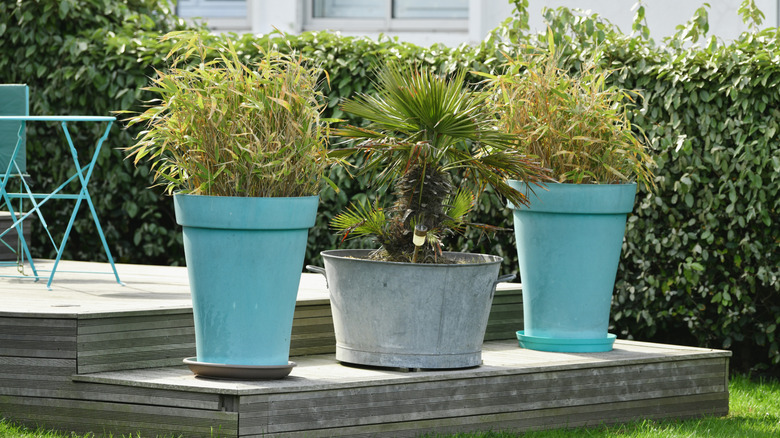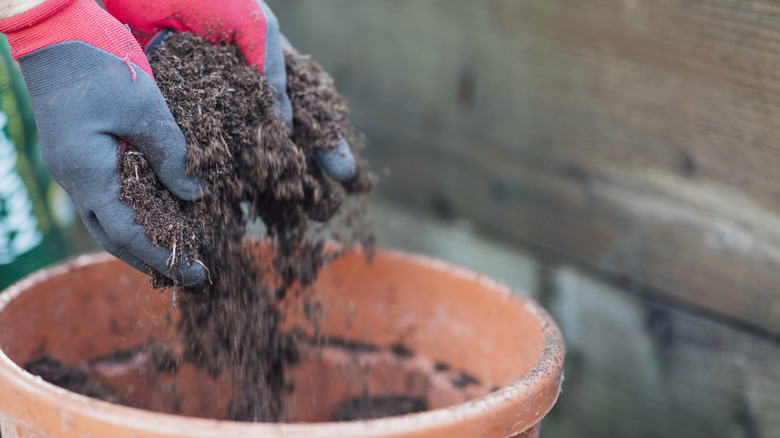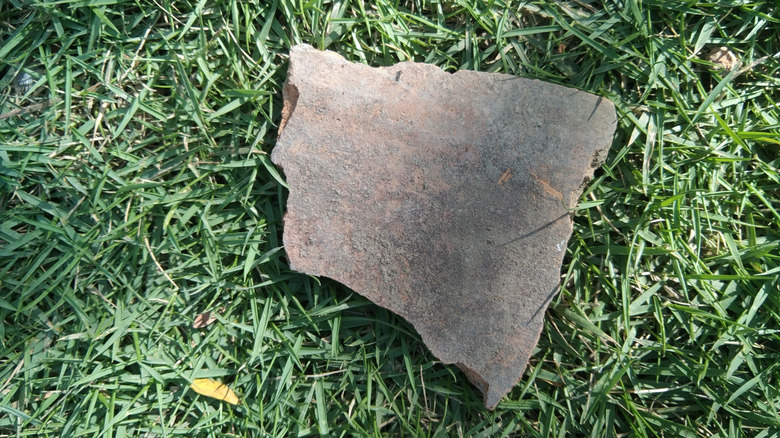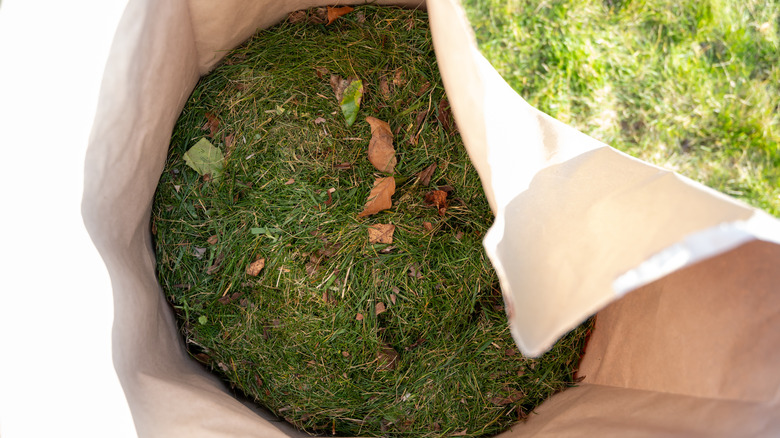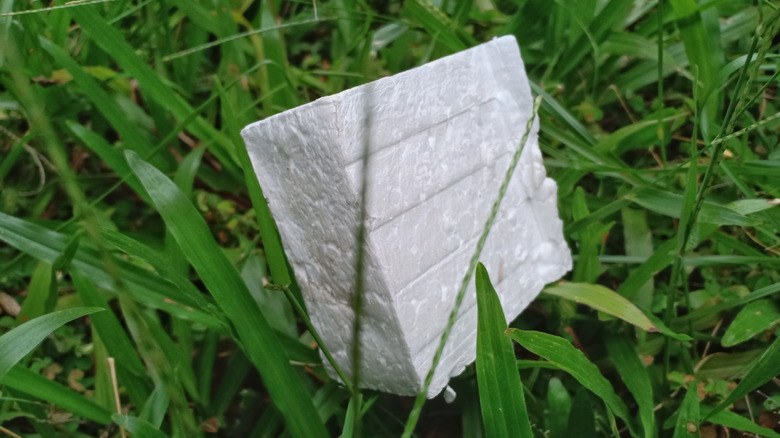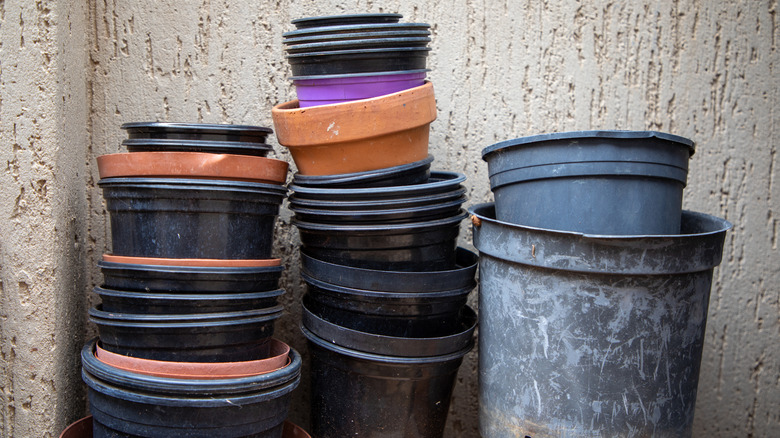Costly Mistakes To Avoid When Filling Large Garden Planters
Large planters are a practical choice for patios, balconies, and porches. They hold more soil, support bigger plants, and help manage watering and root growth more consistently. They're also ideal for growing small trees, layered arrangements, or even kitchen herbs in tight spaces. But despite all their perks, they can turn into a headache if you cut corners on what goes inside. Yes, potting soil is expensive, but don't use problematic fillers that can cost you more in time, money, and patience in the long run. For example, using compost that contains weed seeds that haven't fully broken down can cost you time with a weed problem.
Also, tossing in materials like grass clippings, Styrofoam, garden soil, and even plastic liners can block drainage and compact over time. These materials can even cause root damage, mold, or wobbly plants as the soil level shifts. Instead, stick to safe fillers like pinecones, gravel, or broken terracotta, which improve airflow and drainage without breaking down too fast. By avoiding some common mistakes, you can still save money without sacrificing drainage, structure, or your container garden's long-term success.
Treating planters like garden beds
Using free dirt from your yard might sound budget-friendly, but a costly mistake when filling large planters. Garden soil is too dense for containers. It compacts easily, blocks drainage, and reduces airflow to the roots. That can lead to soggy soil and stunted growth. Worse, you might accidentally introduce pests or weeds into your planter. While it might save a few bucks upfront, poor drainage can cause unhealthy plants and will cost more in the long run to replace them. For best results, invest in a well-draining potting mix made specifically for containers.
Using materials that block drainage
It might seem like some kind of DIY shortcut to toss in a glass or tile shard, but the moment you block a pot's drainage with heavy, solid junk, like glass chunks, ceramic pieces, or concrete, you turn it into a bathtub for roots. And plants hate soggy feet. When water has nowhere to go, all that trapped moisture can quickly lead to root rot and nutrient deficiency in plants. So, skip big chunks of solid stuff and instead use breathable materials like gravel, smashed terracotta pieces,or sand.
Grass clippings are a filler faux pas
Using grass clippings to bulk up your planter might sound like a clever shortcut, but it doesn't hold up for long. Fresh clippings are nearly 80% water, so they will decompose fast – usually within a few weeks. This causes the soil to sink and your plants to wobble. You'll end up topping off the pot more often than you'd like. Instead, you should toss clippings into your compost, where they'll eventually be used to boost soil health without messing up your container's structure.
Using Styrofoam to fill space in planters
Some types of Styrofoam break down when exposed to water, leaving behind gaps in the soil and destabilizing your plants. Even if the foam doesn't break down, it does little good. It holds no nutrients, offers poor drainage, and can trap excess moisture. If you're reusing packing materials, test them in water first. While it's sometimes suggested as insulation for plant pots, there are better options, such as pinecones, that won't compromise soil health.
Lining your planter with plastic
Plastic liners, like empty nursery pots, seem like great recycling but can quietly sabotage your plants in outdoor patio planters. The impervious plastic blocks airflow roots that need oxygen and can trap excess water,leading to root rot. On hot days, plastic heats up fast and can destroy roots below the surface. If you're growing edibles, be extra cautious. Over time, plastic liners can shed tiny bits into the soil. These microplastics may end up in the food you grow, and potentially in your body, where they've been linked to inflammation and other health risks.
Treating weed-filled compost like free fertilizer
It's easy to assume that tossing weeds into your compost pile is harmless, but if they contain seeds or haven't decomposed properly, that compost can end up reintroducing the same weeds into your containers. Once spread into a planter, those seeds can sprout and compete with your chosen plants for sunlight and nutrients. To avoid this, don't compost unwanted weeds. It's safer to bag them up and toss them out. Your compost bin should only include approved green materials like vegetable scraps, grass clippings, and untreated plant waste that won't regenerate.
